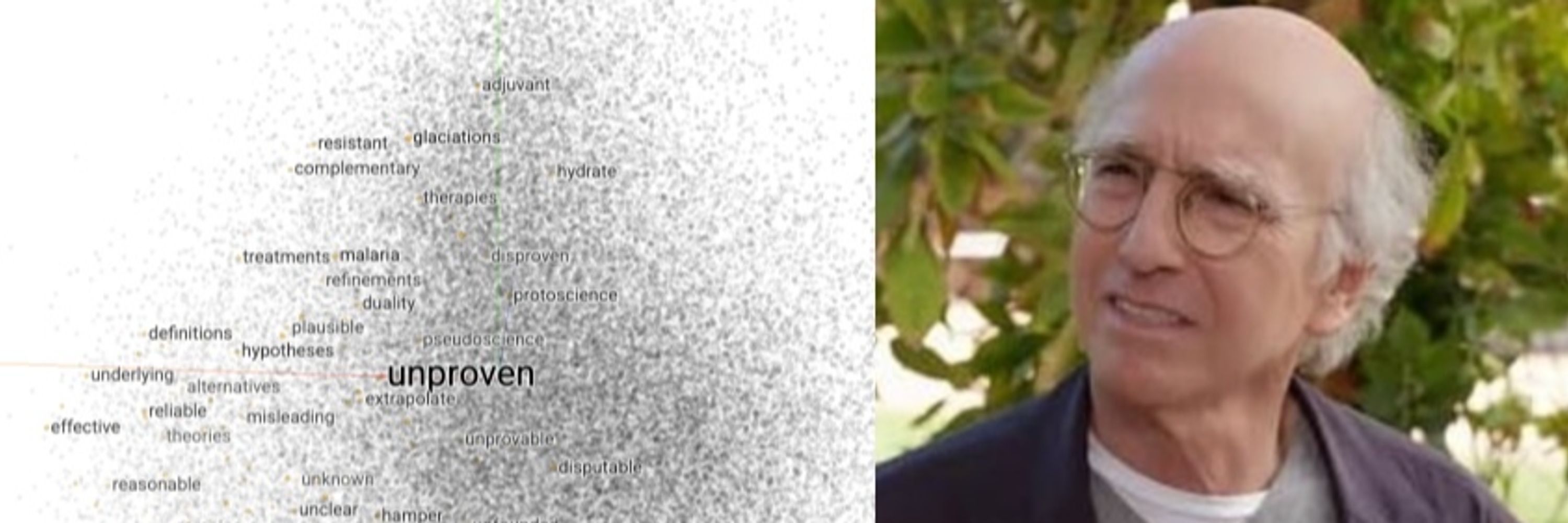
Where we really see a difference is in the mediating effect of individual priorities. When the public cares, they support parties who care too.
We see this in both our aggregate and country-level analysis on migration and the environment.

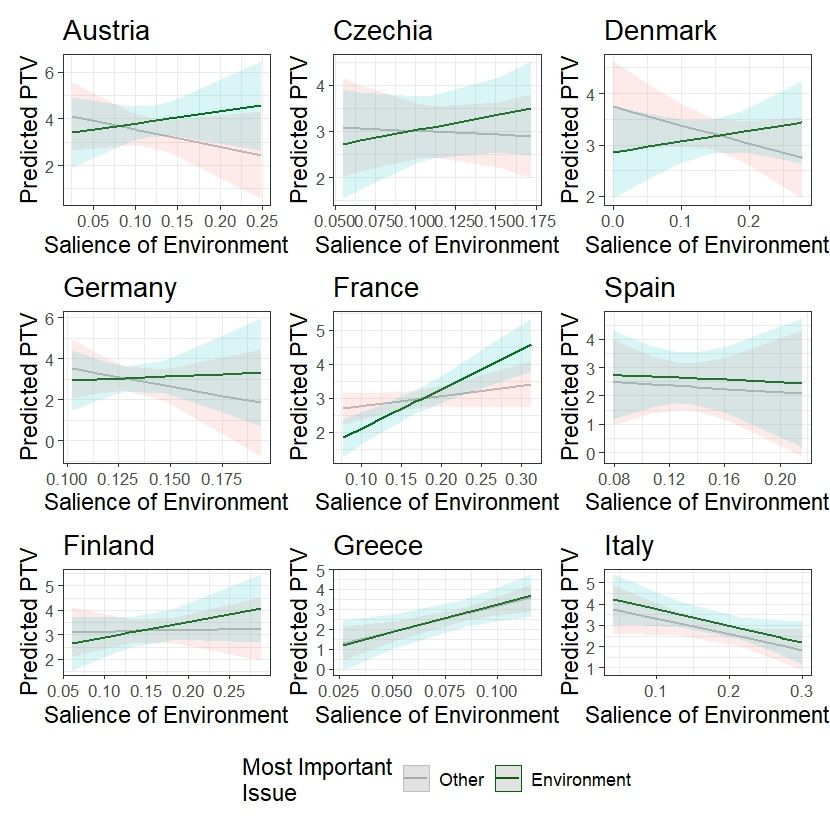

Where we really see a difference is in the mediating effect of individual priorities. When the public cares, they support parties who care too.
We see this in both our aggregate and country-level analysis on migration and the environment.
In reality, we find the relationship is largely dependent on the issue and country context. PTVs increase where parties talk more about migration or the environment

In reality, we find the relationship is largely dependent on the issue and country context. PTVs increase where parties talk more about migration or the environment
I was happy to join a panel on data and themes from the Horizon project #ActEU with @matildecer.bsky.social on gender and polarisation, @giucarny.bsky.social on gender and climate change.
Looking forward to more from ActEU and more panels this afternoon!



I was happy to join a panel on data and themes from the Horizon project #ActEU with @matildecer.bsky.social on gender and polarisation, @giucarny.bsky.social on gender and climate change.
Looking forward to more from ActEU and more panels this afternoon!
Their donut charts show that most parties still favour 280 characters over short-form video, but AfD is relatively more active.
5/
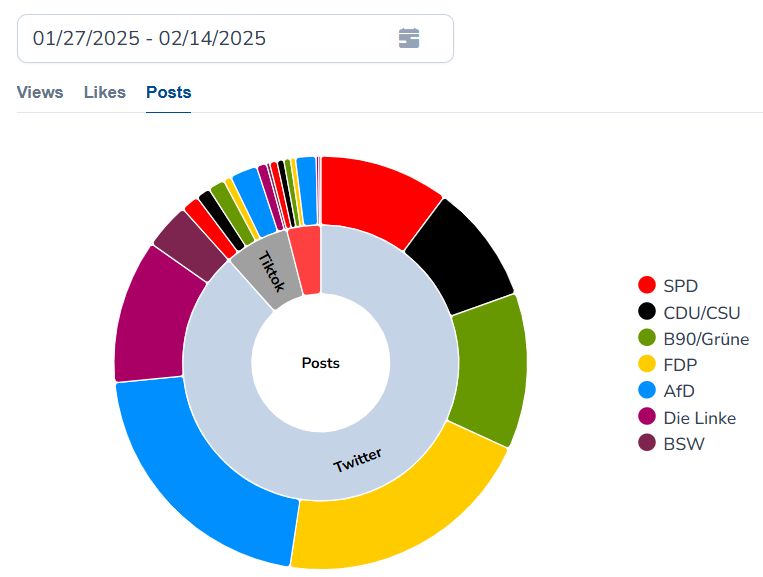

Their donut charts show that most parties still favour 280 characters over short-form video, but AfD is relatively more active.
5/
The small yellow dot to the right of the plot represents Christian Lindner’s FDP, who tweet most frequently for fewer likes and retweets, while also seeking favour with Musk.
4/
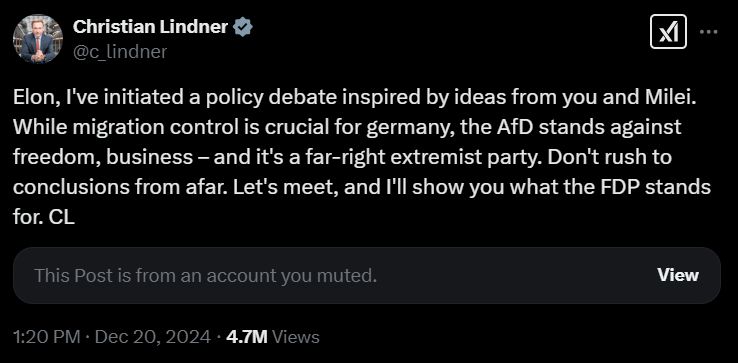
The small yellow dot to the right of the plot represents Christian Lindner’s FDP, who tweet most frequently for fewer likes and retweets, while also seeking favour with Musk.
4/
As @curdknupfer.bsky.social and others have pointed out, Greens tweet more but receive only half as many likes and retweets as the AfD.
Changes to the algorithm and a significant shift in userbase have created a more receptive audience for extremist content on the platform.
3/

As @curdknupfer.bsky.social and others have pointed out, Greens tweet more but receive only half as many likes and retweets as the AfD.
Changes to the algorithm and a significant shift in userbase have created a more receptive audience for extremist content on the platform.
3/
An obvious explanation is changes on Twitter since Musk’s takeover, coupled with recent events in the US.
Unlike Bsky, Twitter data is highly restricted. But bundesdatenschau.com shows that Greens have not left the platform entirely
2/
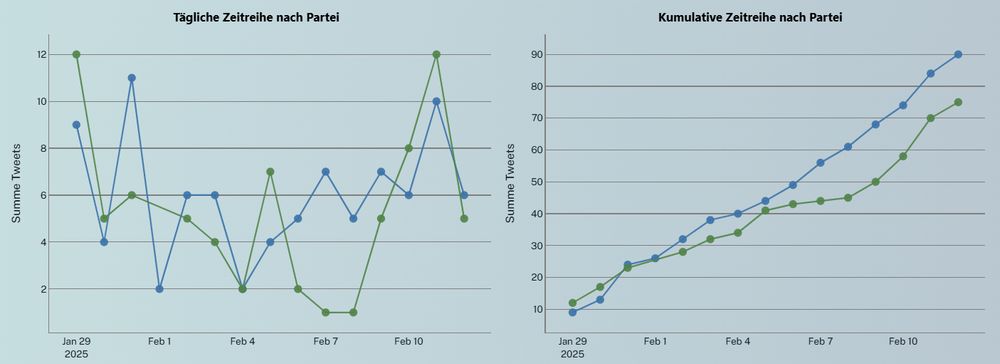
An obvious explanation is changes on Twitter since Musk’s takeover, coupled with recent events in the US.
Unlike Bsky, Twitter data is highly restricted. But bundesdatenschau.com shows that Greens have not left the platform entirely
2/
Ahead of the German elections next Sunday, what can we learn about the parties’ online presence? Despite the efforts of some platforms, we are not completely in the dark.
Thanks to Bluesky's open API, we know Green and Die Linke MdBs are unsurprisingly increasingly active here.
1/
Ahead of the German elections next Sunday, what can we learn about the parties’ online presence? Despite the efforts of some platforms, we are not completely in the dark.
Thanks to Bluesky's open API, we know Green and Die Linke MdBs are unsurprisingly increasingly active here.
1/
Here is the US vs Germany and UK, as a proportion of the total numbers of national representatives in each country.
UK regularly over 10% in the last week (mostly Labour MPs).

Here is the US vs Germany and UK, as a proportion of the total numbers of national representatives in each country.
UK regularly over 10% in the last week (mostly Labour MPs).
Post numbers are potentially distorted by imports from Twitter/X and AMAs (excluded from above plot).
Perhaps # of accounts posting each day is a fairer reflection? Doesn't change the picture much.

Post numbers are potentially distorted by imports from Twitter/X and AMAs (excluded from above plot).
Perhaps # of accounts posting each day is a fairer reflection? Doesn't change the picture much.
Clear increase in posts by Democrats since the election, nothing from Republicans so far.
According to @maxberger.bsky.social's starter pack: bsky.app/starter-pack..., there are currently no GOP Reps or Senators with a Bluesky account*

Clear increase in posts by Democrats since the election, nothing from Republicans so far.
According to @maxberger.bsky.social's starter pack: bsky.app/starter-pack..., there are currently no GOP Reps or Senators with a Bluesky account*
Seems pretty popular for Labour (who of course have the most MPs) and Lib Dems, especially post-Nov 5th. Other parties, not so much.
No sign of any Reform MP accounts so far (some caveats with the data, see below).

Seems pretty popular for Labour (who of course have the most MPs) and Lib Dems, especially post-Nov 5th. Other parties, not so much.
No sign of any Reform MP accounts so far (some caveats with the data, see below).
Maybe, if you are a Green or Die Linke MdB.
Others are likely still more active elsewhere, but worth keeping track of with German elections early next year.
Apparently no AfD or BSW accounts yet, see below for caveats.

Maybe, if you are a Green or Die Linke MdB.
Others are likely still more active elsewhere, but worth keeping track of with German elections early next year.
Apparently no AfD or BSW accounts yet, see below for caveats.

